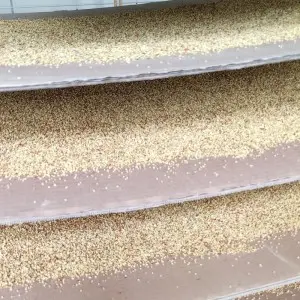aug . 30, 2024 09:14 Back to list
Best Pollination Practices for Pear Trees to Enhance Fruit Quality
Best Pollination Practices for Pear Trees to Enhance Quality
Pollination is a crucial process in the cultivation of pear trees, significantly influencing fruit quality, yield, and overall tree health. Proper pollination practices not only ensure the successful fertilization of flowers but also enhance the quality of the fruit produced. In this article, we will explore the best practices for pollinating pear trees to achieve optimal results.
Understanding Pollination in Pear Trees
Pear trees (Pyrus spp.) are mostly self-incompatible, meaning that they require pollen from another tree to produce fruit. This characteristic makes it essential to have suitable pollinators nearby. Many pear cultivars, like the popular 'Bartlett' or 'Bosc,' benefit from cross-pollination due to genetic diversity. This diversity results in better fruit development, increased size, and improved flavor, making the choice of pollinating varieties critical for successful crops.
Selecting the Right Pollinators
When planting pear trees, it is vital to choose compatible pollinators that bloom at the same time as the primary variety. Generally, pear trees bloom in the spring, and selecting pollinators that share the same flowering period ensures synchronization. For example, 'Bartlett' pears can be successfully pollinated with 'Bosc' or 'Anjou' varieties. It is advisable to plant at least two different varieties within proximity, keeping a distance of no more than 50 feet for efficient pollination.
Encouraging Natural Pollinators
best pollination of pear trees to improve quality

In addition to selecting compatible varieties, attracting natural pollinators such as bees is essential. Creating a pollinator-friendly environment can significantly improve pollination success. Planting a variety of flowering plants nearby, including wildflowers, herbs, and native plants, can help attract bees and other pollinators to the area. Additionally, avoiding the use of pesticides during the bloom period is crucial, as these chemicals can harm pollinator populations.
Timing and Care During Bloom
The timing of flowering and the care provided during this critical period can impact pollination success. It is important to monitor the weather conditions around bloom time. Wet and cold weather can deter pollinators from visiting flowers, leading to poor fruit set. In some cases, hand pollination may be considered as a backup plan. Using a small brush or cotton swab, pollen can be transferred from the anthers of one flower to the stigma of another. This method is particularly useful in smaller orchards or gardens where natural pollinator activity may be insufficient.
Regular Maintenance of Trees
Healthy trees are more likely to produce quality fruit. Regular maintenance, including adequate watering, fertilization, and pruning, can improve tree vigor and subsequently fruit quality. Ensure trees are well-fed with balanced fertilizers and are pruned to enhance airflow and sunlight penetration. These practices not only promote healthy growth but also attract more pollinators during the bloom phase.
Conclusion
Effective pollination is essential for producing high-quality pears. By selecting compatible varieties, encouraging natural pollinators, timing care efficiently during bloom, and maintaining tree health, growers can significantly enhance fruit yield and quality. With thoughtful management and attention to pollination practices, pear orchards can thrive, delivering luscious and flavorful fruits for years to come.
-
Artificial Pollination: Boost Crop Yields Efficiently
NewsAug.27,2025
-
Premium Kiwipollen for Sale | Male Kiwi Pollen Supply
NewsAug.26,2025
-
High-Quality Apple Tree Pollen for Sale - Boost Your Harvest!
NewsAug.25,2025
-
Pure Plant Pollen: Optimize Pollination & Boost Yields
NewsAug.24,2025
-
Pure Plum Tree Pollen for Sale - Optimal Pollination
NewsAug.22,2025
-
Apple Tree Pollen for Sale: Boost Orchard Yields!
NewsAug.21,2025